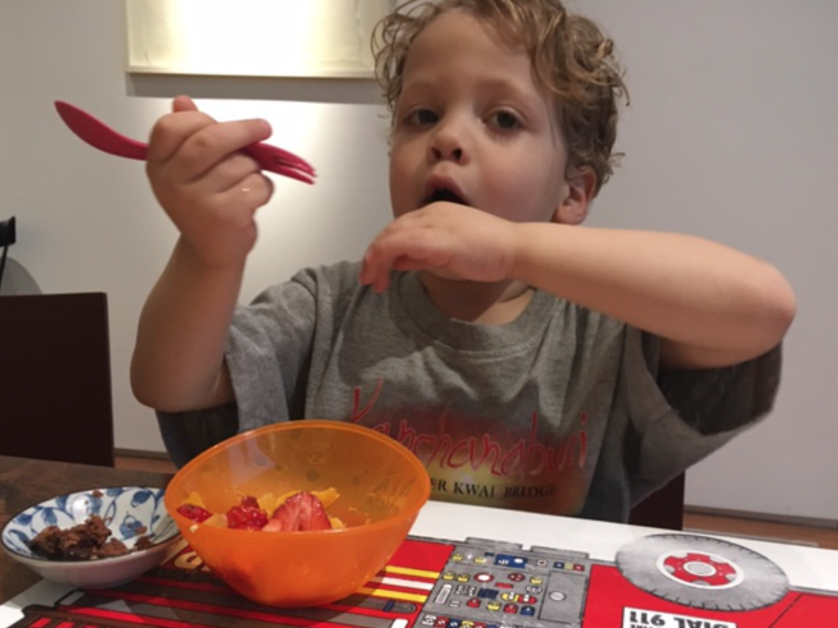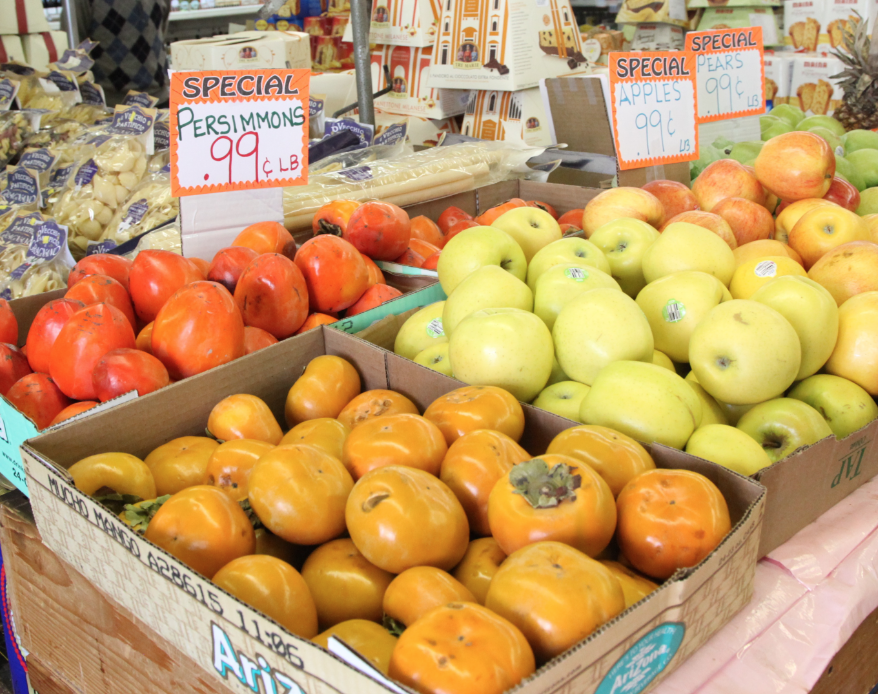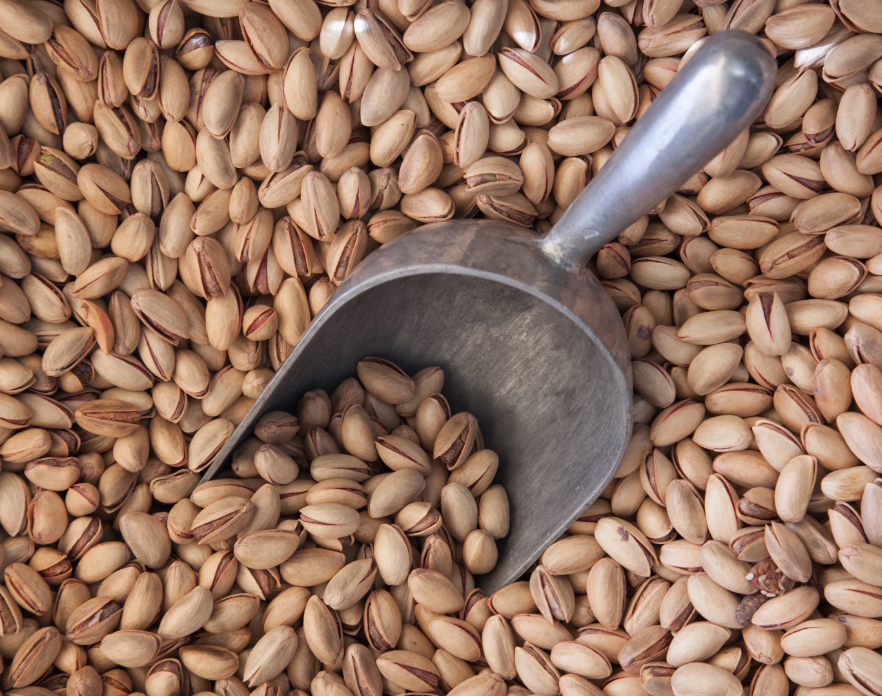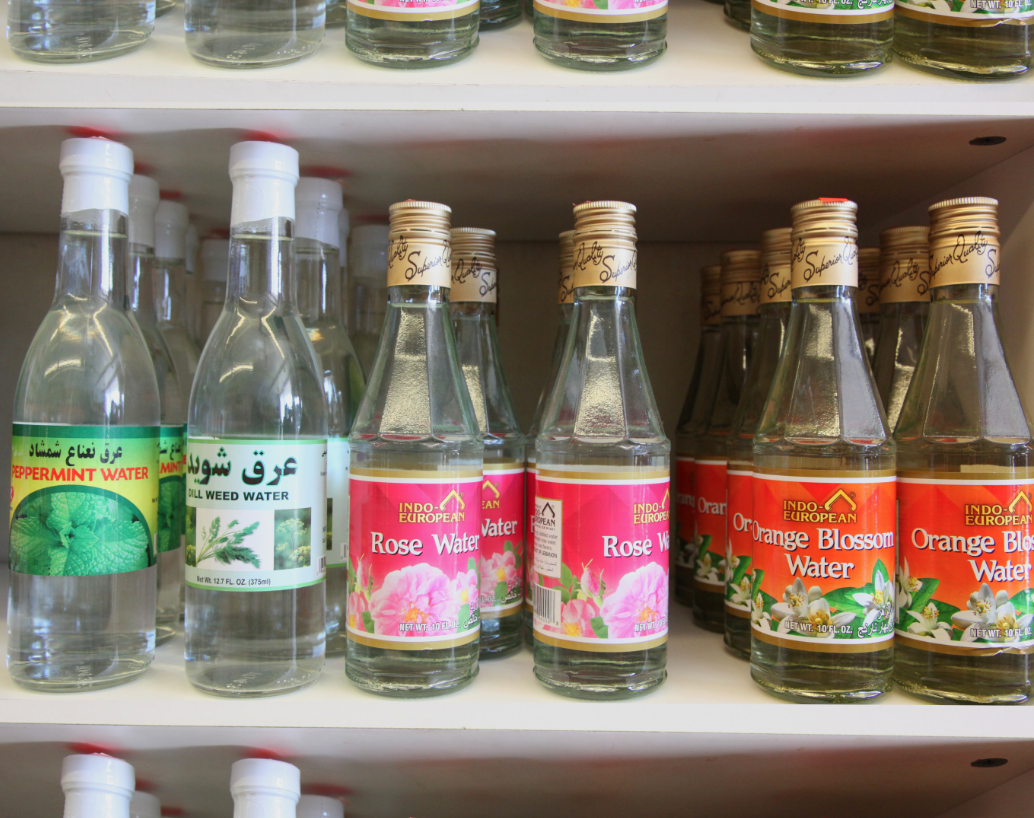Whole grains ready for milling.
Last year, I think my obsession with learning about the real work of baking hit a new high or low depending on how you feel about early morning waking. For one month, every Wednesday, at 4:15 a.m., the alarm on my phone routed me out of bed where I drove to SEED Bakery in Pasadena to help and watch Joseph Abrakjian, master baker at work. The following is a snapshot of my experience and Seed's evolution from new business to community treasure.
I learned the old fashioned way, doing the same task over and over again-nothing fancy- just hard labor, scraping cold dough out of tubs, cutting and weighing it for the bake and sometimes trying bread shaping. My experience was at the tail end of the process which began 24 hours prior with the leavening being made-flour, water, and time. It thickens and ferments slowly and then various flours are added, each one ground out of whole heritage grains-rye, whole wheat, spelt and white depending on the finished bread.
Joseph’s practice as a master bread baker reminds me of a confident artist maintaining a discipline, but forever learning and experimenting. He knows how to create a stronger and more flavorful dough–patience as the first requirement, a slow fermentation, not over mixing, and adding salt to the mix after another waiting time called “the autolyse.” He knows that each dough has a different character depending on the type of flour. Some are robust and can take my tentative shaping while others are truly fussy–the pastry, baguette and ciabatta dough.
Joseph’s practice as a master bread baker reminds me of a confident artist-maintaining a discipline, but forever learning and experimenting.
From about 5 tp 7 in the morning–it is quiet concentration. Restaurant chefs come to order bread in the early morning and supplies are delivered. He manages to keep a number of processes in order, dough that is about to be baked, pastry cream to be made, shaping, and holding. At times the bread does not come out of the oven until 8:30 while customers begin to sneak in around 7:45 before opening time. Pastries are baked to hold the demand back for bread and for the breakfast crowd. And then the bread shows up-olive, walnut wheat, spelt, baguettes, rustic country, ciabatta.
Ingredients are sourced with care from the za'atar seasoning his dad brought here from Lebanon to organic eggs, vegetables, fruits and ethically raised meat. The food is gorgeous, fresh and generous. The customers are returning, are becoming regulars while the word spreads and a community is forming.
Joseph Abrakjian and Pam Watanabe of SEED Bakery, Photography by Ann Cutting
Joseph’s calling is clear–make beautiful food, help others appreciate it. But the commitment is something I did not realize until I made my own 3-hour weekly promise to come and help and learn.
Seed is experiencing growing pains–more success than they expected–and a need for good counter people and baking support. I realize that the world of a high quality, small business is like the beautiful and fragile bowl of many, promising non-profits I have worked with–something that needs to be held with care. Grow while maintaining quality–don’t grow so quickly that the work becomes punishing, stay in the moment while planning the next step, don’t lose sight of the vision/joy.
I realize that the world of a high quality, small business is like the beautiful and fragile bowl of many, promising non-profits I have worked with–something that needs to be held with care.
Joseph's beautiful bread, straight out of the oven.
Bread baking tools--Bannetons for proofing and dough scraper
Postscript, May 2017
Seed is flourishing, having recently expanded into the retail space next door. Joseph and Pam now employ 9 people including a second bread baker, a pastry chef and 2 cooks. Joseph still arrives at 3:00 a.m. as the demand for bread and pastries continues unabated and his commitment to quality holds. But now the bread comes out well before the customers arrive.
DIY
If you are interested in learning more about bread baking, Los Angeles provides a treasure trove of resources. Novice and advanced bakers are welcomed by Los Angeles Bread Bakers, an active Meet Up group organized by Eric Knutzen. Their introductory classes are fun, inexpensive and a great way to enter the world of healthy, delicious bread baking. They also sell excellent quality organic flour in bulk at extremely reasonable prices and at times offer specialized workshops for advanced bakers. The Institute of Domestic Technology, Joseph Shuldiner's brain child, often runs Food Crafting 101, which includes bread baking among its "basics." King's Roost, a retail store in Silver Lake, sells milling and bread making equipment and offers classes on a regular basis.
For those wishing to enter the pinnacle of bread making, a number of artisan bread baking pioneers have shared their secrets. The bible for these committed souls appears to be Tartine Bread by Chad Robertson. Almost every serious bread baker I know owns a flour dusted copy.
As I am a believer in the adage that the perfect can be the enemy of the good, my go to recipe for bread baking is the Twenty-One Hour Boule. The recipe's ease has made it a standard part of my food making repertoire and this beautiful, fragrant boule embodies the idea of nourishment in all of its glory. Give it a try and please share any of your favorite bread baking experiences here.
























